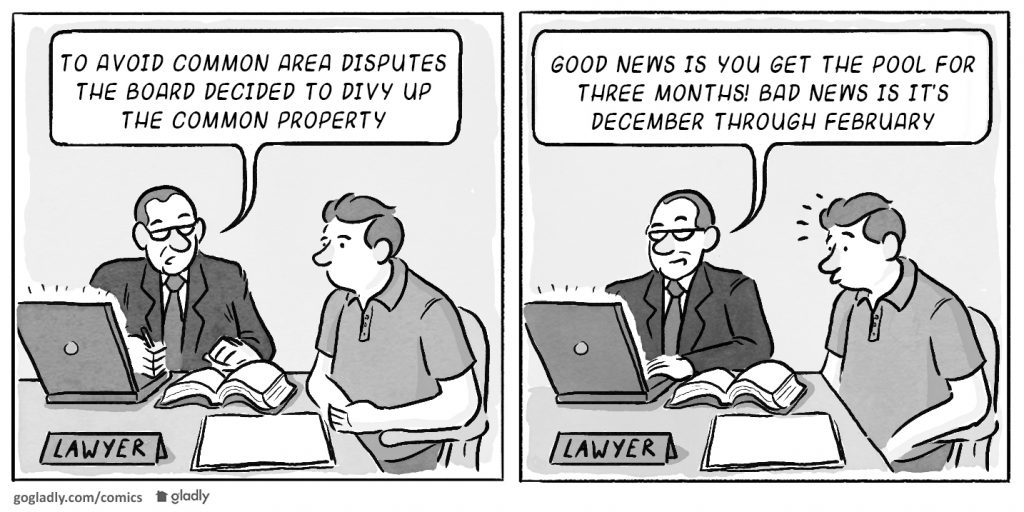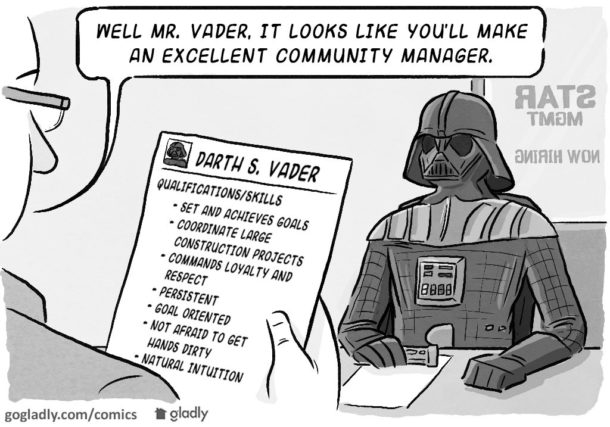No matter what kind of community you live in there are perks and restriction. In common interest communities, these perks and restrictions have a lot to do with the differences in the type of community it is and what you really own. Many buyers don’t give a second thought to the difference between a condo and a townhouse. But these distinctions can make a difference especially when it comes to rules, fees, and amenities.
Single-Family Homes
With single-family homes each home is freestanding and the owner owns the lot that the home sits on. If there is common property like a shared road, park, or clubhouse this community will have a HOA to collect funds and oversee the maintenance of the common area.
Planned Unit Development
A PUD is typically a community with significant common area. Each owner owns a home with a lot that can vary in size from just the footprint of the home, to an entire lot and yard. As the name suggests a PUD is a planned community designed to provide access to a variety of amenities. Home types can vary from single-family to multi-family such as twin and town homes.
Condominium
When you think of a condominium you often think of the high-rise towers, but many condos look just like a multi-family PUD. The primary difference is that in a condo, you own the area within the walls of his home. The land and structure is owned by the association as a whole with each member owning a percentage of that property.
Co-op
On the surface the co-op looks similar to the condominium, but when you buy into a co-op, you become a shareholder in a corporation that owns the property. As a shareholder, you are entitled to the exclusive use of your home but you don’t own actual real property.
- Liar, Liar, Pants on Fire! Handling Misinformation in Your HOA - March 13, 2019
- Setting the Ground Rules for Neighbor Disputes - June 27, 2018
- HOA Board Responsibilities – It’s Not as Difficult as You’re Making It. - April 23, 2018



 Help
Help
Not completely accurate, our townhouse association is a property owners association and not condominiums. Each townhouse is built on its own lot and includes front yard, back yard and some lots have side yards included in lot. Some of our Townhouses have significant differences in designs. All of it is complex for Board to deal with funding.
Excellent article! So important to know what you can and cannot do before you buy!
Hi Lynda
thanks for your comment, you are absolutely right it is complex. Townhouses can be condos, POA, PUD – Townhouse is really the style. Most townhouses are not condominiums but they can be. It really comes down to if you own land or not. I managed a community that had “Condominium” in the name but in reality it was a PUD. Very confusing for the mortgage underwriters.
Our HOA recently mailed out FHA and VA certification notices and both state that the community is condos. I have a deed for the attached structure (townhouse) and the lot it sits on. Talk about people who don’t know what they are talking about.
Very well written and your explanations pretty well spell it out. I live in a 300 Unit Condo Complex. It is funny to see some of the comments that have been included, so I thought I would add mine. Our BOD allowed our Corporation to expire over 18 months ago, yet they still sign all of our contracts, as if we were still Incorporated. We put in ACC request and they are denied due to no one knows what our Unit Boundaries are. We have a good BOD, they just need to be open a little more to outside input. Maybe we all do when it comes to Associations.
It is even more complex than the discussion so far indicates. The names vary from state to state. For instance, here in Pennsylvania, we have condos, cooperatives and “planned communities.” The latter are what many people call “homeowners associations.”
I have seen condominiums where the owner buys a parcel of land and may build a single or attached house on it. I have seen homeowners associations where the buyer gets only the footprint of the house and no land around it.
thus, it is essential to read the governing documents to know what you are buying and what type of services the association will be providing.
Condominiums, cooperatives, Planned Unit Developments, Homeowner Associations, common interest communities and so on… All can vary in style (single family detached, townhome, lowrise, midrise or highrise), and be residential, mixed-use or non-residential. There is no one best way to structure a project; it depends on the zoning, subdivision law, design, amenities, shared components and method of governance. The only constant is that you must read the documents to understand how things are supposed to work.
[…] This not only means experience in community management but experience specific to your type of community — condos, single Family, townhouses, large communities, small communities, […]